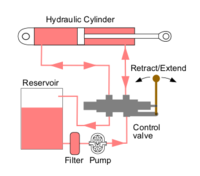
Photo from wikipedia
Abstract Three cylindrical vertical flow (VF) (1st stage) and three horizontal flow (HF) vermifilters (2nd stage) were designed and planted with Canna indica to study the effect of HLR. The… Click to show full abstract
Abstract Three cylindrical vertical flow (VF) (1st stage) and three horizontal flow (HF) vermifilters (2nd stage) were designed and planted with Canna indica to study the effect of HLR. The vermifilters were loaded (to VF) with synthetic dairy wastewater at three HLRs of 0.3, 0.6 and 0.9 m d−1 and operated for 100 days. Removal rate constants were higher at HLR 0.6 m d−1 and the value of KBOD5, KCOD, KNH4+-N, KTN, KTP (for VF + HF unit) were 0.51, 0.41, 0.32, 0.23, 0.26, respectively. Efficiency of VF reactor were higher than HF reactor in case of all types of pollutants. The average removal of BOD5 was found to be 90.43% at HLR 0.3 m d−1 and 85.75% at HLR 0.6 m d−1, while for COD it was found to be 85.59% and 79.64%, respectively. In the present study, the overall theoretical oxygen transfer rate (OTR) for HLR 0.3, 0.6 and 0.9 m d−1 (VF + HF unit) were 36, 92 and 195.6 g m−2 d−1, respectively. The OTR value for HF reactor was very less. The present value is much higher than other studies and it may be due to earthworm respiration and their burrowing and tunnelling activities. The percentage increase of earthworm number in all VF reactors were in the range of 28.3–31.5 and in HF reactor in the range of 19.1–26.2.
Journal Title: Biochemical Engineering Journal
Year Published: 2018
Link to full text (if available)
Share on Social Media: Sign Up to like & get
recommendations!